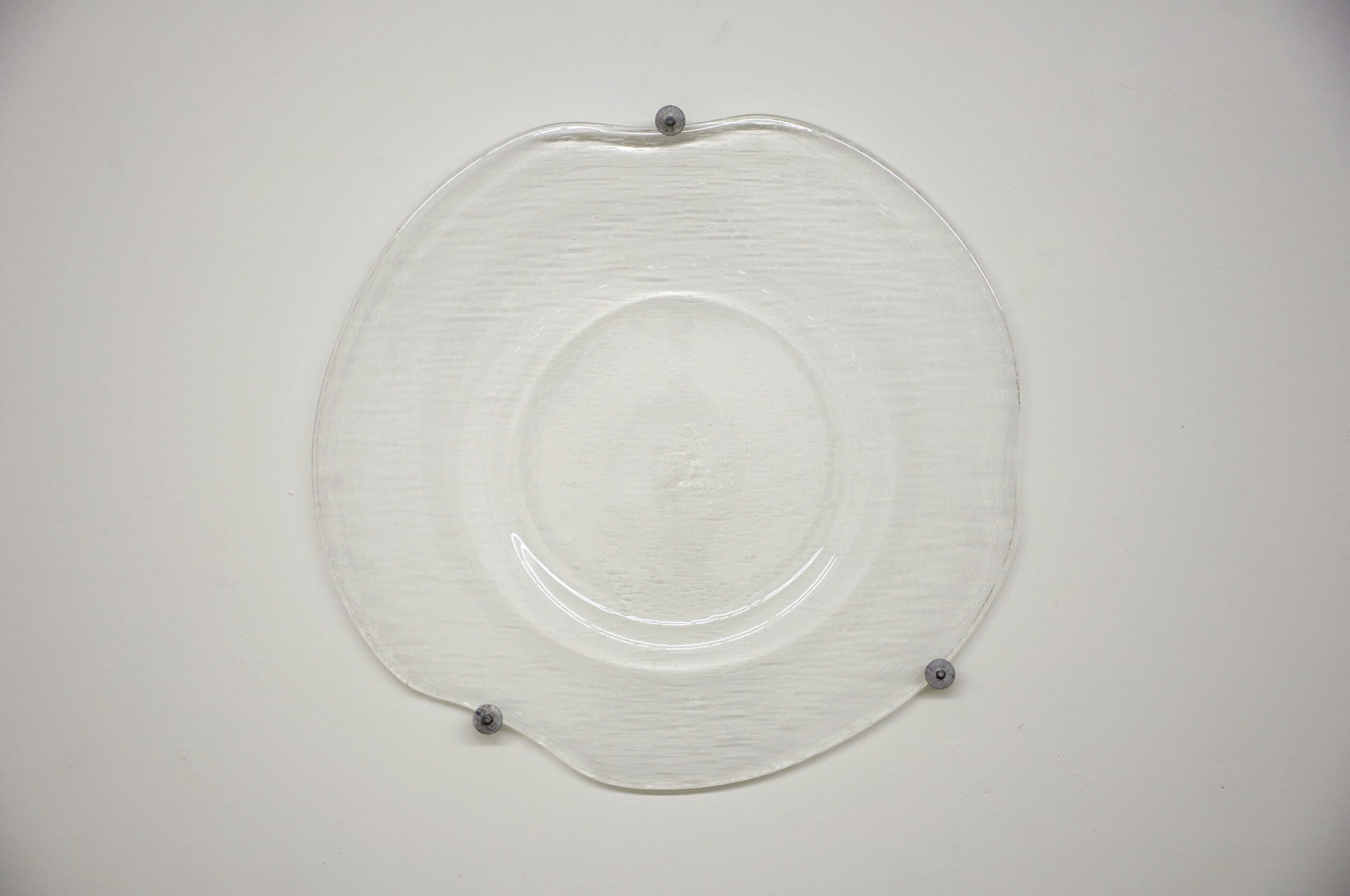Main Building
“By Nature”
-
Ayse Erkmen

By Nature
Nature has been a driving force for artistic production throughout centuries. As a motif, it was most prominent from the beginning on, next to depictions of the divine and the human being. In the second half of the 20th century, the relationship between art and nature experienced a great shift that under the name of Land Art or Earth Art made nature itself the material for artistic processes. In recent years, art and sciences have become more acquainted and seem to produce images and objects that try to shed new lights on natural phenomena through an artistic-scientific lens.
Ayşe Erkmen’s first solo show in Denmark “By Nature” at Kunsthal 44 Møen refers in its title first and foremost to the setting of the exhibiting site on island of Møn. Surrounded by hilly fields, the Kunsthal itself is embedded within nature that had drawn many artists to live and work here. Yet Erkmen’s exhibition engages neither only with the surroundings, nor with the topic of nature solely in one of its historic trajectories. “By Nature” offers various distinctive entries to the subject.
In the first room, hundreds of miniature porcelain animals from the beginning of the 20th century and mostly made in Germany sit in transparent boxes presented on a large white table. Those collectables, brought together by Erkmen from different flea markets in Berlin, show two things very poignantly: as man-made objects they mimic a domesticated version of nature that becomes a precious commodity usually looked at in bourgeois living rooms or salons and placed next to flowers, coffee cups or sugar pots. Erkmen presents them under acrylic glass cases in various “herds” of different spezies. In this peculiar organization, which is different from the way these figurines are usually presented, they become simultaneously objects of desire and an eclectic flock of pottery fauna. The porcelain copies therein emphasize the polarity of nature on the one hand, and cultural production on the other.
In a smaller room next to the entrance, transparent mouth blown glass discs are mounted on the wall. Thousands of air bubbles were caught in the process of making them. These handcraft storages of air not at last remind of frozen water encapsulating tiny air pockets.
A line of overlapping drawings of leaves and culms runs around the walls of the adjunct room like a floral frieze. Here, a gestural depiction of nature is at stake that relates back to methods of natural sciences. The drawings are not made with pencil or brush, but with a pipette. Each single line depicting a natural object is drawn with an instrument that usually mixes ingredients, takes samples or helps to apply liquids on apparatuses of scientific investigation, like microscopes.
In a separate screening room, a video projection shows at first sight one monochrome color. Ruptures and reflections in the bright yellow or intense green soon make clear that it must be liquid surfaces that we look at, filmed with the camera pointing at 90 degrees on the surface. Erkmen’s subjects are extremely poisoning acids usually used in foundries to prepare patina for bronze. Within the exhibition, these natural colors provided from lava of volcanoes introduce nature’s attraction and danger, the temptations and limitations of our possibilities to exploit or control what nature offers.
The main exhibition hall at Kunsthal 44 Møen has undergone a transformation, which is as subtle as it is radical. The island of Møn has attracted generations of artists, especially painters, because of its light. At the back of the Kunsthal and on the leading axis of the main space lies a terrace that opens up to the fields behind and gives way to a view on cultivated nature typical for the island. Erkmen’s only intervention is that she lowered the electric lights while keeping their angle and position to one meter fifty above ground. The roof’s acute angel is repeated and floats freely in the air, creating a doubled roof of light just above the ground. One of mankind’s major steps of distancing itself from nature was to settle and built permanent shelters; they allowed protection from natural forces and made man less dependent on sun, rain, snow or wind. Erkmen’s light roof alludes to this, while creating an electrical light passage towards the only source of natural light. We walk with ducked heads under a roof of light only to squint when once again in the bright fields of Askeby, and the sheer fact that 44 Møn is surrounded “By Nature”.
http://www.ayseerkmen.com
The exhibition is supported by:
Vehbi Koç Foundation
Augustinus Fonden
Knud Højgaards Fond
15. Juni Fonden
Statens Kunstfond
Vordingborg Kommune






